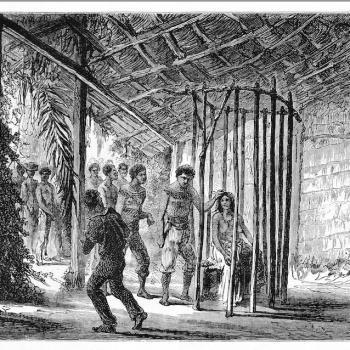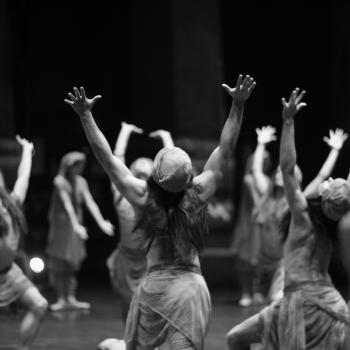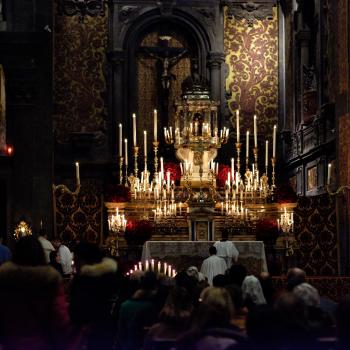Connor Wood

From religion blogs to blockbuster academic books, debates and conversations on religion are plentiful in today’s world. But if one digs deeply into the mass-media conversation about religion, something becomes apparent: people are just not understanding each other. Writers and thinkers constantly express bafflement at their ideological opponents’ outlandish views. Pundits seem to talk right past each other. A research paper from the late 1990s may give us a hint as to why – around the world, progressives and the orthodox use completely different language for talking about the right way to live.
In the early 1990s, sociologist James Hunter popularized the phrase “culture wars” to describe American society’s increasing division along particular ideological lines. Specifically, Hunter found that Americans were becoming sharply polarized around sexual issues – including homosexuality and abortion – as well as topics such as gun rights, drug use, and the role of religion in public life. Interestingly, Hunter observed that people who disagreed with each other on one issue were likely to disagree with each other in the same ways on divorce, homosexuality, drugs, and religion, creating a deep, two-sided rift in American society.
Hunter coined the terms “orthodox” and “progressivist” to label these two cultural factions, describing the orthodox as believing in a God-inspired, universal moral law, while progressivists saw moral truths as more ambiguous and subject to change and revision. Importantly, progressives saw people as being free to determine their own choices about how to live – up to and including taking illegal drugs or having an abortion. The orthodox, on the other hand, took a dimmer view of personal autonomy, believing that people ought to be constrained in their personal choices when those choices contradicted God’s laws.
Around the same time, religion scholar Martin Marty and historian R. Scott Appleby observed that a similar rift was widening in other countries around the world. Labeling the more conservative factions “fundamentalists” and the more liberal wings “modernists,” Marty and Appleby noted that fundamentalists in any given country were often more similar to fundamentalists in other countries than they were to their own, more modernist countrymen.
Psychologist Lene Arnett Jensen (now of Clark University) published a study in 1998 in the Journal for the Scientific Study of Religion of inhabitants of the U.S. and India that tested this observation. Using Hunter’s schema of orthodox and progressivist – which, she concluded, was roughly identical with the fundamentalist-modernist distinction – Jensen hypothesized that the moral reasoning of orthodox Americans would actually be more similar to that of orthodox Indians than to progressivist Americans. Similarly, the progressivists of both countries would be more similar to each other than to the orthodox members of their own societies.
Jensen selected four groups that would represent the orthodox-progressive divide in both the U.S. and India. The American orthodox sample came from a Southern Baptist church, while its progressive counterpart was taken from a mainline Baptist congregation. In India, the orthodox were residents of the old town of Bhubaneswar, Orissa – a famously sacred Hindu temple site, where non-Hindus are barred from temples and ancient practices are carried out daily. The progressivist Indian respondents, meanwhile, were taken from a newer, nearby suburb, where educated residents ignored traditional Hindu caste divisions.
All respondents answered a series of questions about moral quandaries, including the ethicality of divorce, suicide, and sati (the traditional Hindu practice of a widow’s self-immolation at her husband’s funeral). However, rather than focusing purely on whether the respondents accepted or rejected the ethicality of these controversial topics, Jensen focused on the reasons they gave. This unique moral reasoning demonstrated the difference between orthodox and progressive modes of thinking.
Interpreting her results, Jensen drew on the moral typology of anthropologist Richard Schweder, who hypothesized that individuals use three different ethical modalities to make moral decisions: autonomy, community, and divinity. The ethic of autonomy emphasizes personal freedoms and liberties, limiting moral considerations to avoiding outright harm of others. The ethic of community, in contrast, takes into consideration one’s responsibility to one’s community and the role one plays in it. Finally, the ethic of divinity extends our moral responsibility to include the commands of a supernatural God, whose will trumps our individual desires and autonomy.
Jensen found that orthodox inhabitants of both the United States and India used the ethic of autonomy less and the ethic of divinity more than their respective progressivist counterparts. For example, one Indian respondent used the following reasoning to claim that suicide was wrong:
Who are you to do it? You are sent here by some great power. God has created us, given us life. One day he will take it back. So why should we interfere with God’s plans and destroy our souls at will?
Meanwhile, both American and Indian progressivists were far more likely to give responses that were later coded as reflecting an ethic of autonomy. In defending suicide, for instance, one progressivist American stated that:
I tend to be very sympathetic to one of who commits suicide,…particularly when…they know they’re going to end up just a vegetable kind of thing. Wanting to die before they’ve lost all humanity is something I can understand.
The only notable differences between the Indian and the American samples was that the progressivist Americans were even more likely to use the ethic of autonomy to justify their moral choices than the progressivist Indians, and orthodox Indians were the only group to justify the act of sati. Otherwise, Jensen’s expectation was fairly clearly borne out: the moral reasoning of progressives was similar across cultures, as was the reasoning of the orthodox. In fact, an orthodox Indian’s moral thinking was likely to be far more similar to that of an orthodox American than to a progressivist Indian, and vice-versa. The most important point? The distinction was sharpest around issues of personal autonomy and divinity.
Jensen’s findings, although now nearly 15 years old, have clear relevance for today’s struggles to understand the intersections of religion and culture. Rather than a split between the communist East and capitalist West, or between the first world and the third world, perhaps today’s most important social divide is between orthodox, or traditionalist, religious believers worldwide and their progressivist, secular counterparts. If this is true, then a conservative Hindu may have more in common with a conservative Protestant or traditionalist Muslim – particularly when it comes to moral reasoning – than with a liberal Hindu or secular Indian. Worldwide, progressives value individualism and autonomy, while the orthodox sincerely believe that excessive individualism harms communities and their relationship with the divine.
This isn’t to say that there aren’t serious drawbacks to fundamentalism or traditional orthodox religion. Jensen found that orthodox Americans and Indians alike shared a view that women were socially inferior to men, and that communities ought to exercise strict control over their members’ behavior. To a progressivist of any nationality, these claims might sound – rightfully – regressive and authoritarian. But the fact is that a significant portion of the world’s population sees the world through this lens. If we hope to reach worldwide consensus regarding matters of grave import, including global warming and overpopulation, then a better understanding of different moral systems will be vitally necessary. We cannot speak only one language and hope that everyone will understand. Instead, we would do well to learn to become moral interpreters.











